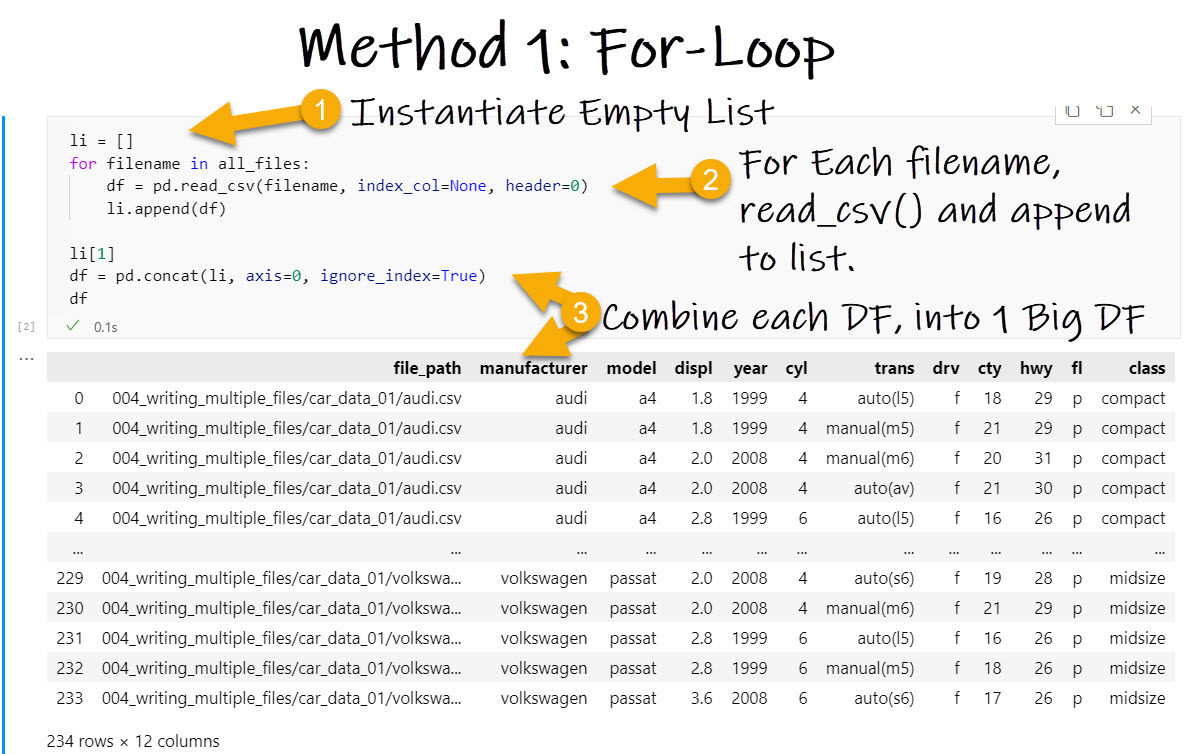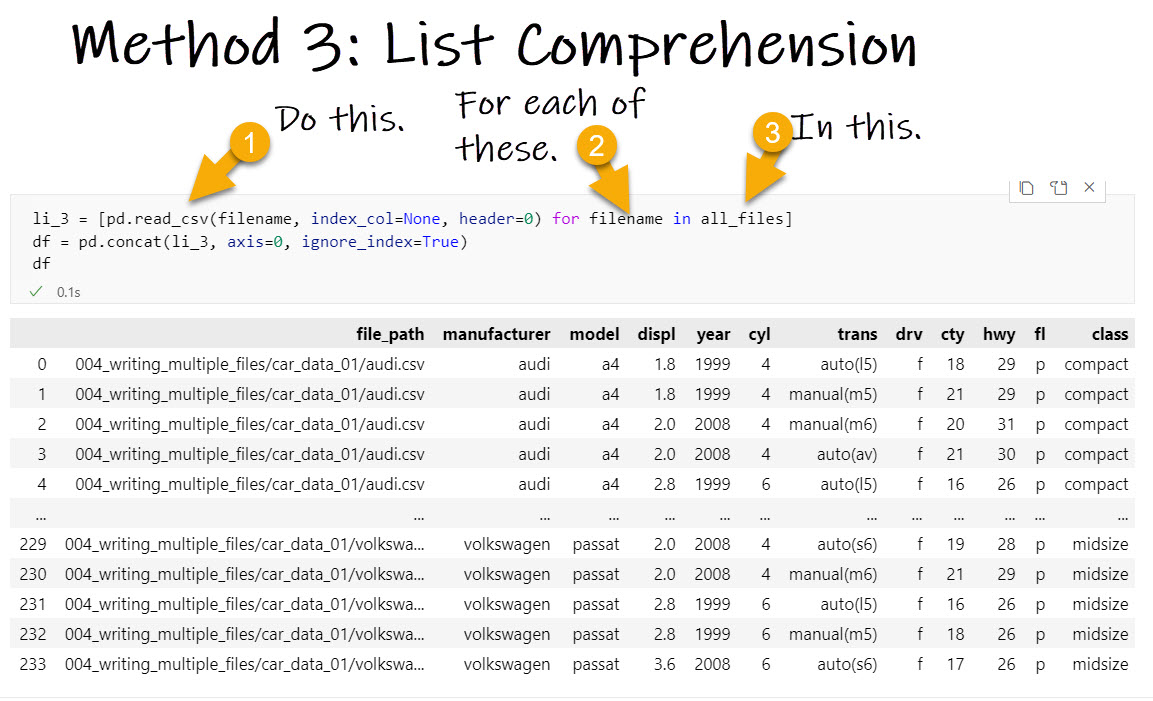Sum = 0.0 n = 0 # number. Writer = csv.writer(f) writer.writerows(someiterable) since open () is used to open a csv file for reading, the file will by default be decoded into unicode using the system default encoding (see locale.getencoding () ). Web the dask library can read a dataframe from multiple files: (you can report issue about the content on this page here) Web the following python programming syntax shows how to read multiple csv files and merge them vertically into a single pandas dataframe.
Writer = csv.writer(f) writer.writerows(someiterable) since open () is used to open a csv file for reading, the file will by default be decoded into unicode using the system default encoding (see locale.getencoding () ). As you have asked for it, no more and no less: >>> import dask.dataframe as dd >>> df = dd.read_csv ('data*.csv') (source: Reading many csv files is a common task for a data scientist. Sum = 0.0 n = 0 # number.
Web import csv with open('some.csv', 'w', newline='') as f: Ensure that when you do this there is a trailing new line in each of the csv files at the end of it, or you'd end up with the last line of file_x and first data line of file_x+1 on the. Web 3 ways to read multiple csv files: (you can report issue about the content on this page here) Import pandas as pd datasets_list = ['users', 'calls', 'messages', 'internet', 'plans'] users, calls, messages, internet, plans = [ (pd.read_csv (f'datasets/ {dataset_name}.csv')) for dataset_name in datasets_list] share.
Posted on september 21, 2021 by business science in data science | 0 comments. In this free tutorial, we show you 3 ways to streamline reading csv files in python. So you'd have to open a new file and read each of the csv files using glob. Reading many csv files is a common task for a data scientist. You're close, you need to read each of the *.csv files and concat them. >>> import dask.dataframe as dd >>> df = dd.read_csv ('data*.csv') (source: File_names = ['data1.csv', 'data2.csv', 'data3.csv'] # create list of csv file names. It takes a path as input and returns data frame like. Web import csv with open('some.csv', 'w', newline='') as f: Web i've got more than 200 files in.csv and i'd like to read and compute two of them in the same time (current and the next one). Web the following python programming syntax shows how to read multiple csv files and merge them vertically into a single pandas dataframe. Writer = csv.writer(f) writer.writerows(someiterable) since open () is used to open a csv file for reading, the file will by default be decoded into unicode using the system default encoding (see locale.getencoding () ). Web the dask library can read a dataframe from multiple files: For this task, we first have to create a list of all csv file names that we want to load and append to each other: (you can report issue about the content on this page here)
For Reading Only One Data Frame We Can Use Pd.read_Csv() Function Of Pandas.
For this task, we first have to create a list of all csv file names that we want to load and append to each other: File_names = ['data1.csv', 'data2.csv', 'data3.csv'] # create list of csv file names. >>> import dask.dataframe as dd >>> df = dd.read_csv ('data*.csv') (source: As you have asked for it, no more and no less:
Reading Many Csv Files Is A Common Task For A Data Scientist.
You can read and store several dataframes into separate variables using two lines of code. Web 3 ways to read multiple csv files: (you can report issue about the content on this page here) Web the dask library can read a dataframe from multiple files:
Web 3 Ways To Read Multiple Csv Files:
Web in this article, we will see how to read multiple csv files into separate dataframes. Web i've got more than 200 files in.csv and i'd like to read and compute two of them in the same time (current and the next one). Df = pd.read_csv(file path) let’s have a look at how it works Writer = csv.writer(f) writer.writerows(someiterable) since open () is used to open a csv file for reading, the file will by default be decoded into unicode using the system default encoding (see locale.getencoding () ).
X1 = Pd.read_Csv(File, Delimiter=',', Dtype=None, Names=('X', 'Y')) X2 = Pd.read_Csv(File + 1 , Delimiter=',', Dtype=None.
You're close, you need to read each of the *.csv files and concat them. In this free tutorial, we show you 3 ways to streamline reading csv files in python. Web import csv with open('some.csv', 'w', newline='') as f: Sum = 0.0 n = 0 # number.









